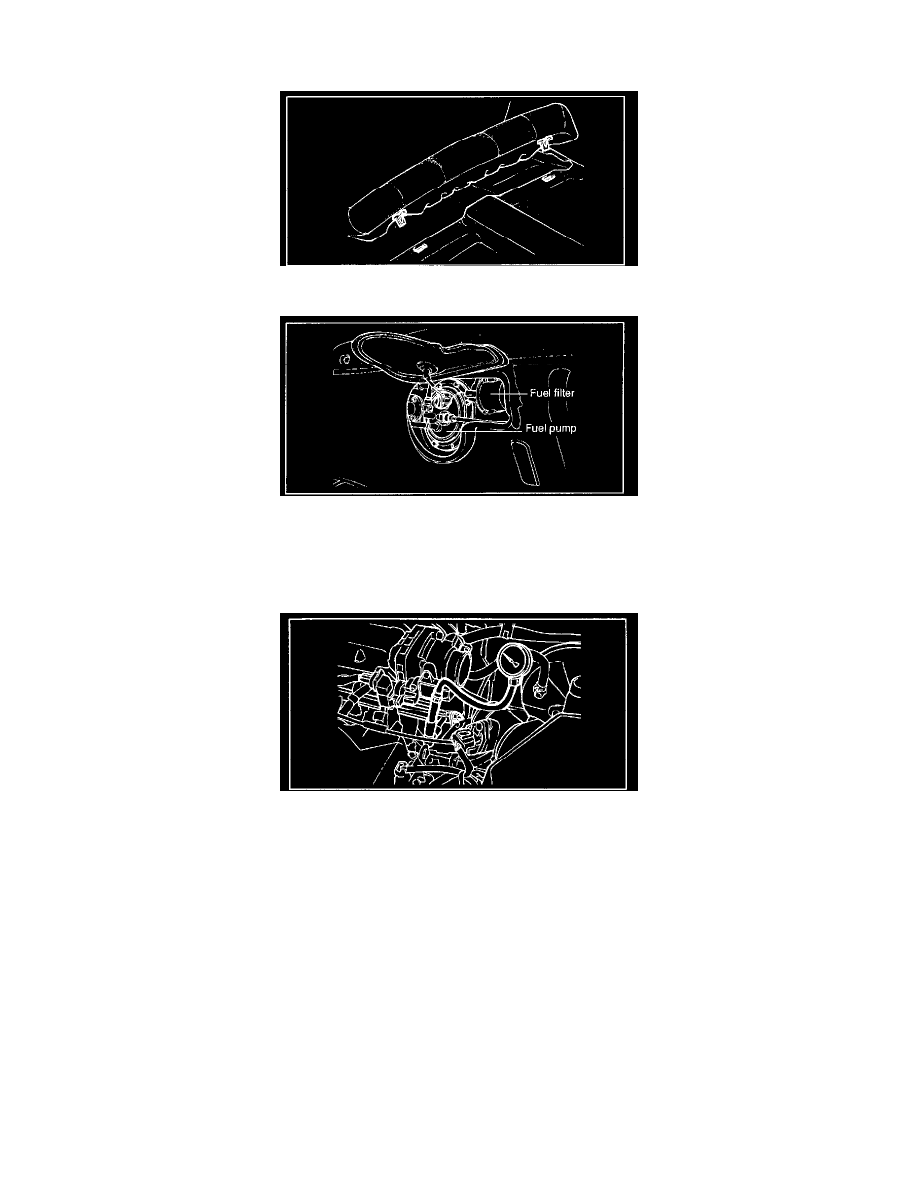Accent L Hatch Back L4-1495cc 1.5L SOHC MFI (2000)

Fuel Pressure: Testing and Inspection
FUEL PRESSURE TEST
1. Press the two tabs under the rear seat and raise the seat, then detach the inspection panel of the fuel pump.
2. To reduce the internal pressure of the fuel lines and hoses, first start the engine with the fuel pump disconnected and wait until it stops by itself.
NOTE: Be sure to reduce the fuel pressure before disconnecting the fuel main pipe and hose, otherwise fuel will spill out.
3. Disconnect the battery negative (-) terminal and then connect the fuel pump harness connector.
4. Using the fuel pressure gauge adapter (09353-24000, 09353-24100, 09353-38000), install the fuel-pressure gauge to the fuel filter.
Tighten the bolt to the specified torque.
Tightening Torque
Fuel pressure gauge to fuel filter: 25 - 35 Nm (250 - 350 kg.cm, 18 - 26 lb.ft)
5. Connect the battery's negative (-) terminal.
6. Apply battery voltage to the terminal for the pump drive and activate the fuel pump. Then, with fuel pressure applied, check that there is no fuel
leak from the pressure gauge or connections.
7. Start the engine and let it idle.
8. Measure the fuel pressure.
Standard value : 350 kPa (3.5 kg/sq.cm, 49.8 psi)
